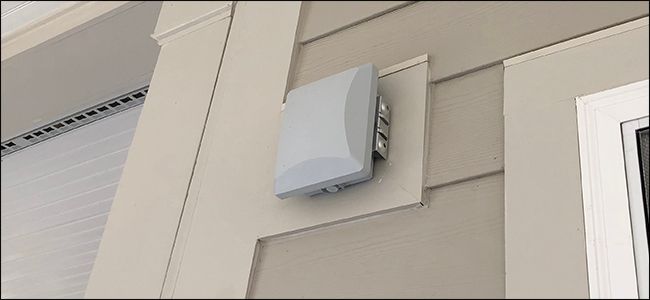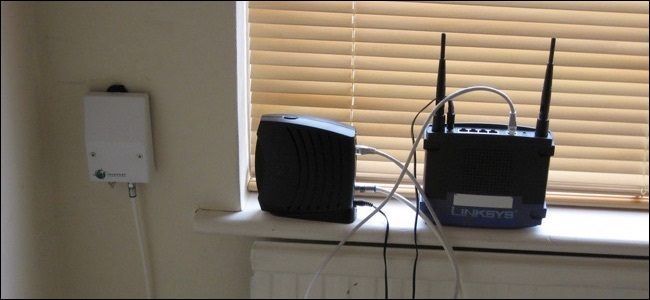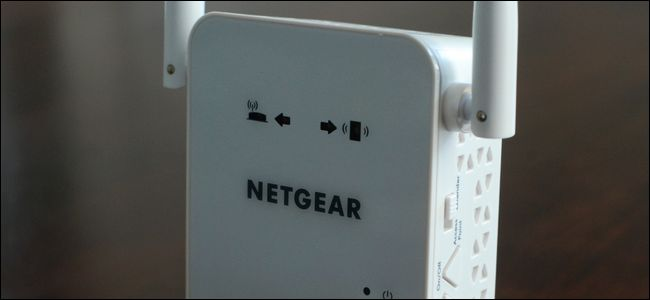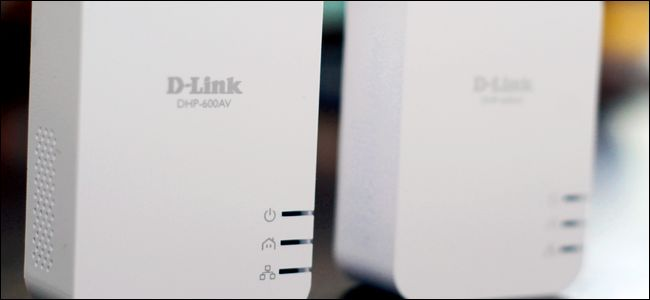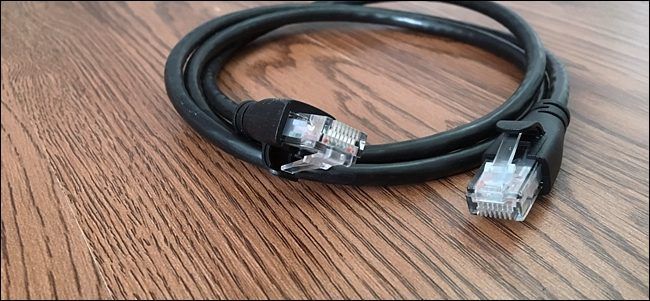Quick Links
If you spend a lot of time surfing your phone on your patio or streaming music while you do lawn work, you need a decent Wi-Fi signal. Here are some things you can do to get the best outdoor signal from yours.
The Wi-Fi inside your house may be lightning fast, but the moment you step outside your front door, you likely lose a good chunk of that speed. Homes can act as giant Faraday cages of sorts, thanks to thick exterior walls that are usually made out of beefier materials than your interior walls. Thankfully, you're not completely out of luck. Here are some ways you can fight back.
Move the Router Closer to Your Patio
Perhaps the cheapest and easiest solution you should try first is to move your router closer to where you'll be hanging out the most outside, like on your patio, front porch, or wherever.
Check to see if this is possible in the first place, as your modem (or modem/router combo) still needs to plug into the internet coming into the house, and the router at least needs an Ethernet connection from that modem. Depending on how your home is wired up, the locations you can move your router may be limited.
If you can move your router closer and you notice a big difference in the Wi-Fi signal on the patio, then that's great, but also make sure you aren't sacrificing Wi-Fi signal strength elsewhere in the house.
Get a Wi-Fi Extender
If you move your router and notice that Wi-Fi is suffering elsewhere in the house, then it's time for a Wi-Fi extender. These devices extend the Wi-Fi signal that your main router puts out, hence the name. You may also be able to leave your router where it is, and put an extender closer to where you need it outdoors.
There are a couple ways you can do this. The first way is to get a traditional Wi-Fi extender. It's looks a lot like a mini router with antennas, but it's strictly meant to broaden your Wi-Fi network so that you can get a strong signal without having to move closer to the main router. They can connect to your main router wirelessly or via Ethernet.
You can also use a second router and configure it to act as a Wi-Fi extender. This is a great option if you already have a spare router lying around, but it takes a bit more configuration on your part.
Lastly, the easiest and simplest option (albeit the most expensive), is to invest in a mesh Wi-Fi system like the Eero or Google WiFi. Netgear even makes an outdoor unit for its Orbi mesh system. These are essentially sets of wireless access points that you place around your house. They automatically communicate with one another, and create one big Wi-Fi network. The best part is that they're super easy to set up, making them great for novice users.
Use Powerline Adapters
The above options will likely do the trick if you're just hanging out on your patio or front porch. However, if you'll be any farther from your house (say like by the pool or in a detached shed or shop, you could try some powerline adapters.
If you're going to be somewhere outside your house that isn't really close to the property, you may still be able to get away with using a Wi-Fi extender in a shed or shop. If not, you could try using powerline adapters, like this pair from TP-Link. These transfer data over the electrical wires in your house, turning them into Ethernet cables of sorts.
Both units get plugged into outlets. One unit goes near your router and also connects to it via Ethernet. The other unit gets plugged into a Wi-Fi extender (via Ethernet as well) that you have set up in your shed (or whatever location you need). Of course, this assumes that the power in your shed or other remote location is connected to your house (which it likely is), but you'll want to make sure of that first before going this route.
Run Ethernet to a New Location
If you're looking to get internet access to a shed or some other location that doesn't have power running to it, one final option to consider is just running a buried Ethernet cable from your house to that location. This is obviously quite a bit more work than the options mentioned above, since you'll need to dig up a trench and spend some money on materials and labor. But if you really want internet access outside of your house and nothing else works, this is the way to go.
Just keep in mind that Ethernet cable (at least, Cat 5e and Cat 6 cabling, the two most common you'd work with) has a maximum length of 328 feet, which should be plenty long anyway (that's more than the length of a football field), but it's important to know just in case you live on a large lot and your detached shed or shop is farther away from your house.

